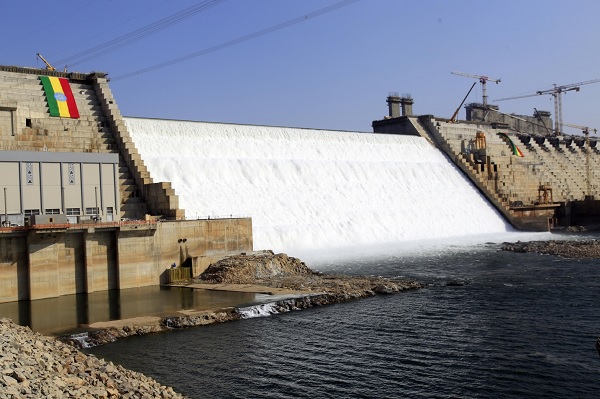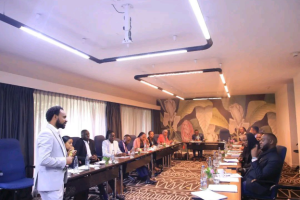
Africa has been actively implementing various initiatives aimed at achieving Agenda 2063, a strategic framework designed to create a prosperous and integrated continent. This ambitious agenda is grounded in the ideals of Pan-Africanism and the African Renaissance, which emphasize unity, self-reliance, and sustainable development.
Significant to these efforts is the commitment to strengthen economic connectivity across the continent. Ethiopia, in this regard, has been at the forefront of this vital aspiration, building various mega projects aimed at eradicating poverty not only within its borders but throughout Africa. The Ethiopian government recognizes that poverty is a multifaceted issue that requires comprehensive solutions and collective actions.
In this respect, the country’s commitment to regional cooperation is evident in its foreign policy, which prioritizes partnerships with neighboring countries. By fostering collaboration in various mega power projects, including GERD, Ethiopia aims to build a network of support that can enhance economic stability.
The ongoing initiatives in energy generation and connectivity are not just about income generation; they play a crucial role in realizing continental goals and fostering regional cooperation. This approach not only benefits Ethiopia but also contributes to the overall integration of the African continent. A key component of these initiatives is the development of essential infrastructure, which includes power lines, roads, and telecommunications networks connecting African countries.
The country’s investment in large-scale projects such as the Grand Ethiopian Renaissance Dam (GERD) would significantly increase its electricity generation capacity. With an estimated potential of over 45,000 megawatts from hydropower alone, Ethiopia is well-positioned to become a regional energy hub, exporting power to neighboring countries and fostering regional stability through shared infrastructure.
Of course, from GERD to other projects, Ethiopia is trying to play a leading role in linking nations with infrastructure projects, recognizing that connectivity is vital for trade and economic growth. Improved infrastructure will facilitate the movement of goods and services, ultimately enhancing market access for local businesses and stimulating economic activity.
The country has already established electricity export agreements with several neighboring nations, including Sudan, Djibouti, and Kenya. The Ethio- Kenya transmission line, a 500-kilovolt interconnector stretching over 1,000 kilometers, was completed to facilitate the exchange of clean and affordable electricity. This project is expected to supply up to 2,000 megawatts, enhancing energy access and reducing reliance on fossil fuels in the region. Similar arrangements with Sudan and Djibouti are also delivering significant economic and environmental benefits.
Regional integration through energy trade helps mitigate the challenges of uneven power distribution and demand across East Africa. Countries with lower generation capacities benefit from Ethiopia’s surplus, while Ethiopia gains vital foreign exchange revenues. These connections also pave the way for broader economic partnerships, infrastructure development, and political cooperation.
With ongoing investments in transmission lines and renewable energy infrastructure, the country is advancing a vision of shared prosperity and sustainable development in the Horn of Africa and beyond, positioning energy as a cornerstone of regional unity and progress.
In a previous interview with the Ethiopian Press Agency, some experts stated that Ethiopia’s efforts have significantly contributed to connecting the people of East Africa, enabling them to achieve common development aspirations.
The competitive landscape necessitates the development of cooperative frameworks that balance national interests with regional aspirations. Ethiopia’s foreign policy emphasizes prioritizing relationships with neighboring countries, fostering regional integration through infrastructure development, and the establishment of various free trade zones.
The Deputy Director General of Situation Monitoring at the Ministry of Foreign Affairs, Zerubabel Getachew (PhD) stated that there has long been an understanding in the region about the importance of energy connectivity. This shared vision reflects a commitment to collaborative growth that transcends national borders.
He emphasized that it’s not just about economic gains; the provision of reliable electricity is essential for delivering social services to citizens, enhancing their quality of life.
In his part, General Director of African Affairs at the Institute of Foreign Affairs, Gizachew Asrat (PhD) highlighted the need for equitable water resource management in the region. He stressed the need for rational use of these vital resources, particularly in the context of energy generation.
A recent global study indicates that approximately nine percent of the world’s population lacks access to electricity, with a staggering 97 percent of these individuals residing in East Africa and sub-Saharan Africa. This stark reality underscores the urgency of Ethiopia’s mission in the energy sector.
In response to this pressing issue, the East African Power Pool (EAPP) was established two decades ago to facilitate regional energy collaboration. This organization enables East African countries to work together beyond bilateral energy trade, fostering a spirit of solidarity and mutual support.
The existence of the EAPP demonstrates that these nations view energy connectivity as a viable solution to their energy challenges. Despite the region’s wealth of energy resources, including hydropower, geothermal, and solar energy, a significant portion of the population remains without access to electricity.
This paradox highlights the critical need for a cohesive regional energy network, a goal that Ethiopia has integrated into its foreign policy. The establishment of a regional energy framework is seen as a pathway to addressing the energy deficit and promoting sustainable development.
Zerubabel mentioned that the GERD is designed not only to meet domestic energy needs but also to share Ethiopia’s energy potential with neighboring countries. The dam’s completion is expected to enhance electricity supply to its neighbors, particularly as their economies grow and demand for energy increases.
In fact, GERD is not only a source of clean energy but also serves as a model for large-scale infrastructure projects that prioritize environmental sustainability.
Beyond its immediate benefits, the GERD, upon completion, would transform the country’s energy landscape, providing essential electricity to millions and supporting the nation’s growth. The dam is not merely a construction project; it embodies hope for economic prosperity and social upliftment, representing the aspirations of Ethiopians for prosperity and progress in the face of challenges across the region.
BY FIKADU BELAY
THE ETHIOPIAN HERALD SUNDAY EDITION 22 JUNE 2025



